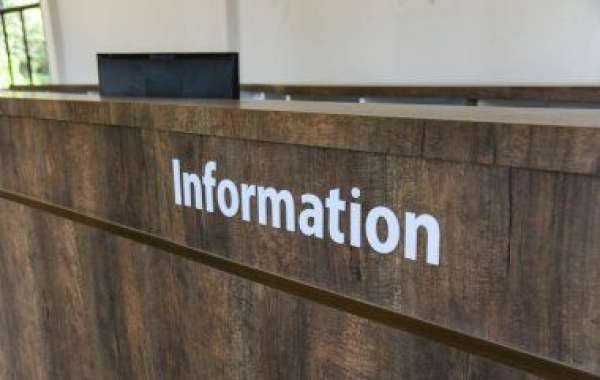This comprehensive guide explores the world of external and internal signage, highlighting their importance, different types, and key considerations for creating an effective signage strategy for your office or commercial space.
External Signage: Making a Statement on the Outside
External signage acts as the welcoming handshake for your office or commercial building. It grabs attention, conveys professionalism, and helps visitors locate you easily. Here are some key types of external signage to consider:
- Building Signs: The cornerstone of external signage, building signs prominently display your company name or building name. Choose from a variety of options like channel letters, illuminated signs, or monument signs, depending on your budget and desired impact.
- Directional Signs: Guide visitors effortlessly with clear and concise directional signage. These signs can point towards the building entrance, parking lot, specific tenant locations within a multi-tenant building, or even amenities like restrooms.
- Digital Signage: Embrace cutting-edge technology with dynamic digital signage. Display real-time information like office hours, upcoming events, or even promotional messages to capture attention and create a modern impression.
- Wayfinding Systems: For complex commercial buildings with multiple floors or tenants, a comprehensive wayfinding system is crucial. This system utilizes a combination of signs, maps, and directories to help visitors navigate the space effortlessly.
Internal Signage: Guiding Visitors Within
Internal signage extends the warm welcome inside your office or commercial building. It helps visitors find their way around, reinforces your brand identity, and creates a professional and organized environment. Here are some key types of internal signage to consider:
- Lobby Signs: Make a positive first impression with a prominent lobby sign featuring your company logo, tagline, or a welcoming message.
- Directional Signs: Internal directional signs are just as important as external ones. Guide visitors to specific departments, conference rooms, restrooms, or exits with clear and concise signage.
- Departmental Signage: Identify different departments or offices within your space with clear departmental signs. This helps visitors locate the right team or individual they need to see.
- Safety and Emergency Signage: Safety signage is crucial for any office or commercial building. These signs clearly mark exits, fire extinguishers, first-aid kits, and other important safety information.
- Branding and Culture Signage: Showcase your company culture and brand personality with creative internal signage. This could include company values, mission statements, team photos, or even inspirational quotes.
Crafting an Effective Signage Strategy
Creating a successful signage strategy for your office or commercial building involves careful planning:
- Understanding Your Needs: Analyze your visitor flow, the layout of your building, and your overall brand identity. This will help determine the type and placement of signage required.
- Maintaining Consistency: Ensure all signage adheres to a consistent design style, including fonts, colors, and logos. This creates a cohesive and professional brand experience.
- Prioritizing Visibility: Signage should be easy to read and understand from a reasonable distance. Consider lighting options for low-light areas and ensure proper placement for optimal visibility.
- Compliance with Regulations: Familiarize yourself with local building codes and accessibility regulations regarding signage size, placement, and content.
The Benefits of Effective Signage in Offices and Commercial Buildings:
Investing in well-designed external and internal signage offers a multitude of benefits:
- Enhanced Brand Image: Professional signage projects a positive and professional image, fostering trust and confidence in your company.
- Improved Visitor Experience: Clear and concise signage helps visitors navigate your building easily, reducing frustration and creating a positive first impression.
- Increased Efficiency: Effective signage reduces the need for visitors to ask for directions, leading to increased efficiency and productivity.
- Employee Morale: A well-designed interior signage system creates a more organized and professional work environment, potentially boosting employee morale.
- Enhanced Safety: Clear safety signage promotes a safe work environment by effectively communicating emergency procedures and hazard warnings.
Conclusion:
Effective signage plays a vital role in the success of any office or commercial building. By understanding the different types of signage available, considering your needs and brand identity, and implementing a strategic approach, you can create a welcoming and functional environment that enhances your brand image and guides visitors effortlessly through your space.








